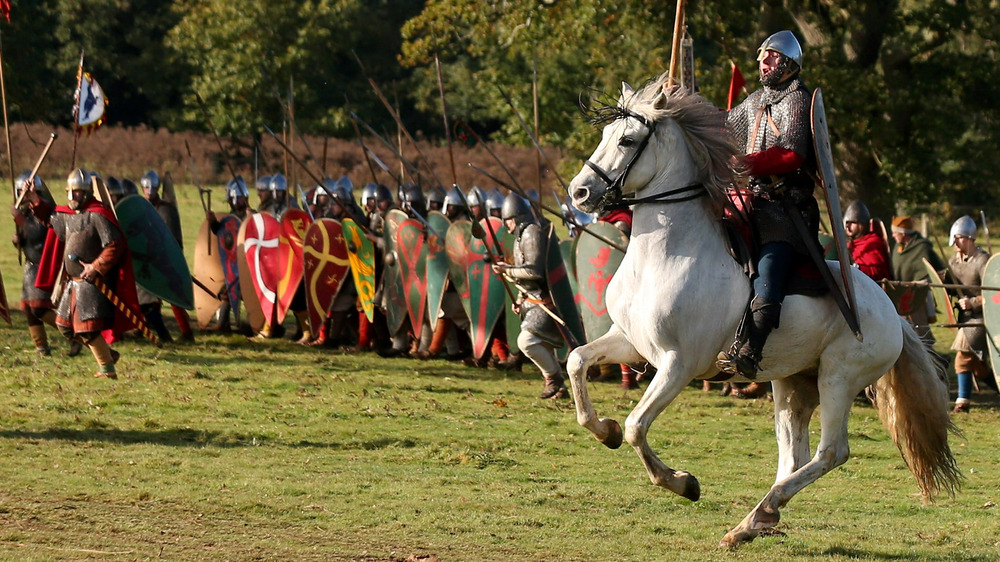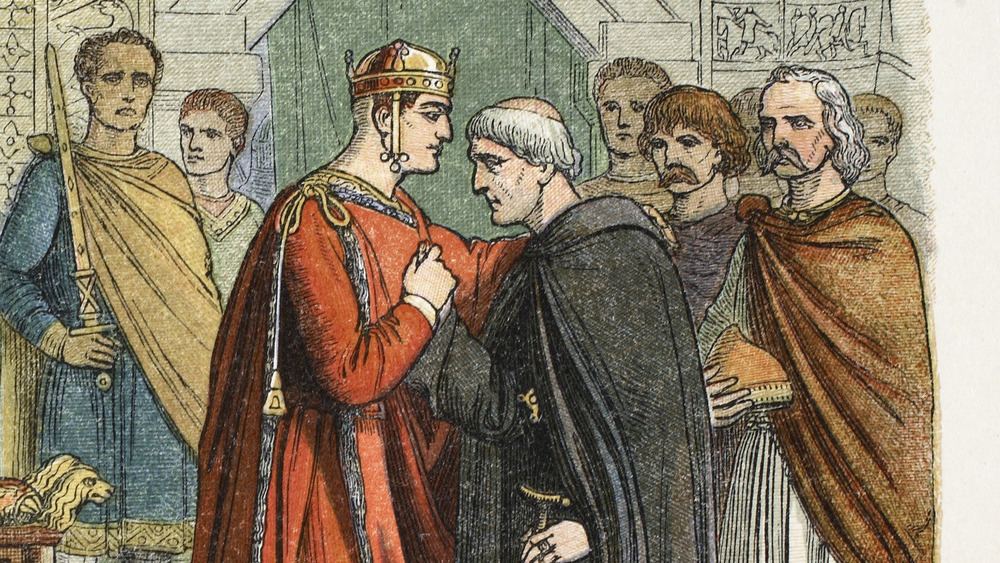The Truth About The Norman Conquest Of 1066
"War is hell," said the Civil War Union General William Tecumseh Sherman. He was giving a commencement speech to the Michigan Military Academy graduates on June 19, 1879, according to Trivia Library, speaking about his experiences.
The sentiment might have been said more than 800 years after the Norman Conquest, but King Harold II, who lost his kingdom in a 17-day war with William the Conqueror and his forces, most likely embraced this idea as well. After all, by October 14, 1066, the last Anglo-Saxon English king was dead, his eye pierced by an arrow during battle.
From the moment Harold Godwin, Earl of Essex, aka King Harold II, was crowned on January 6, 1066, he faced challenges to his power. His own brother, Tostig, and the King of Norway, Harald III, both wanted the throne, according to Britannica. His brother attacked the southern and eastern coast of the country, and by May he had joined forces with Harald, besieging the north. Ultimately, King Harold II defeated the insurgency, killing both of his challengers, but the fighting took its toll, depleting his forces and sapping their energy.
A new king after a bloody war
William, who allegedly was promised the English throne by his cousin Edward the Confessor, contested King Harold II's right to lead the country. William also convinced Harold to pledge to support his claim to the kingdom in 1063, according to Historic UK. He took his forces to Pevensey on the southeast coast on September 28, 1066. They fought their way to Hastings, and faced King Harold's gathering armies.
The Battle of Hastings, a particularly bloody fight, altered English history, according to History.com, and made William the first Norman king of England — ushering in many changes for the country, including making French the official language for a time, a practice that added many French and Latin words to the English lexicon.
William the Conqueror ruled England for 21 years, until September 9, 1087, when he was 59. He fathered four sons and five daughters, and, according to Biography, every English monarch since his tenure is a direct descendant.

